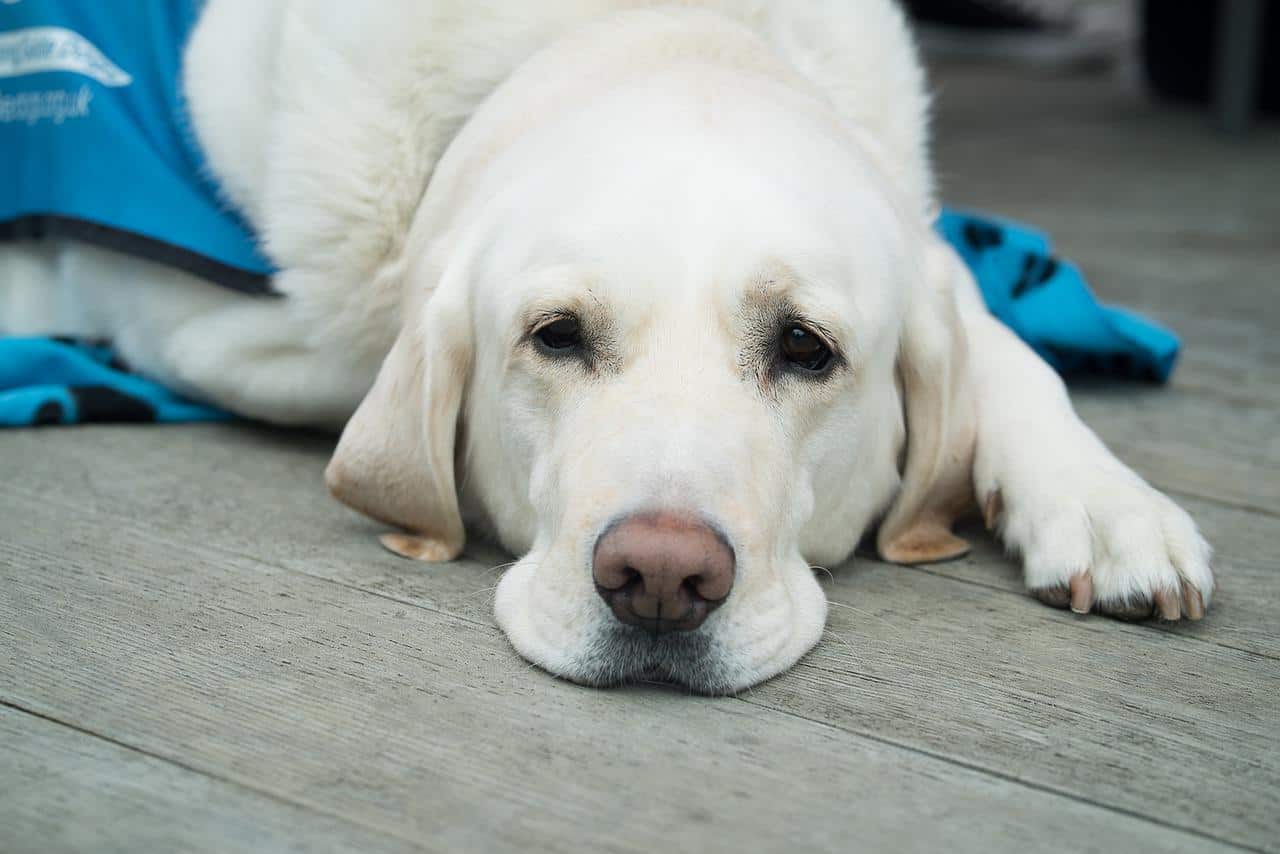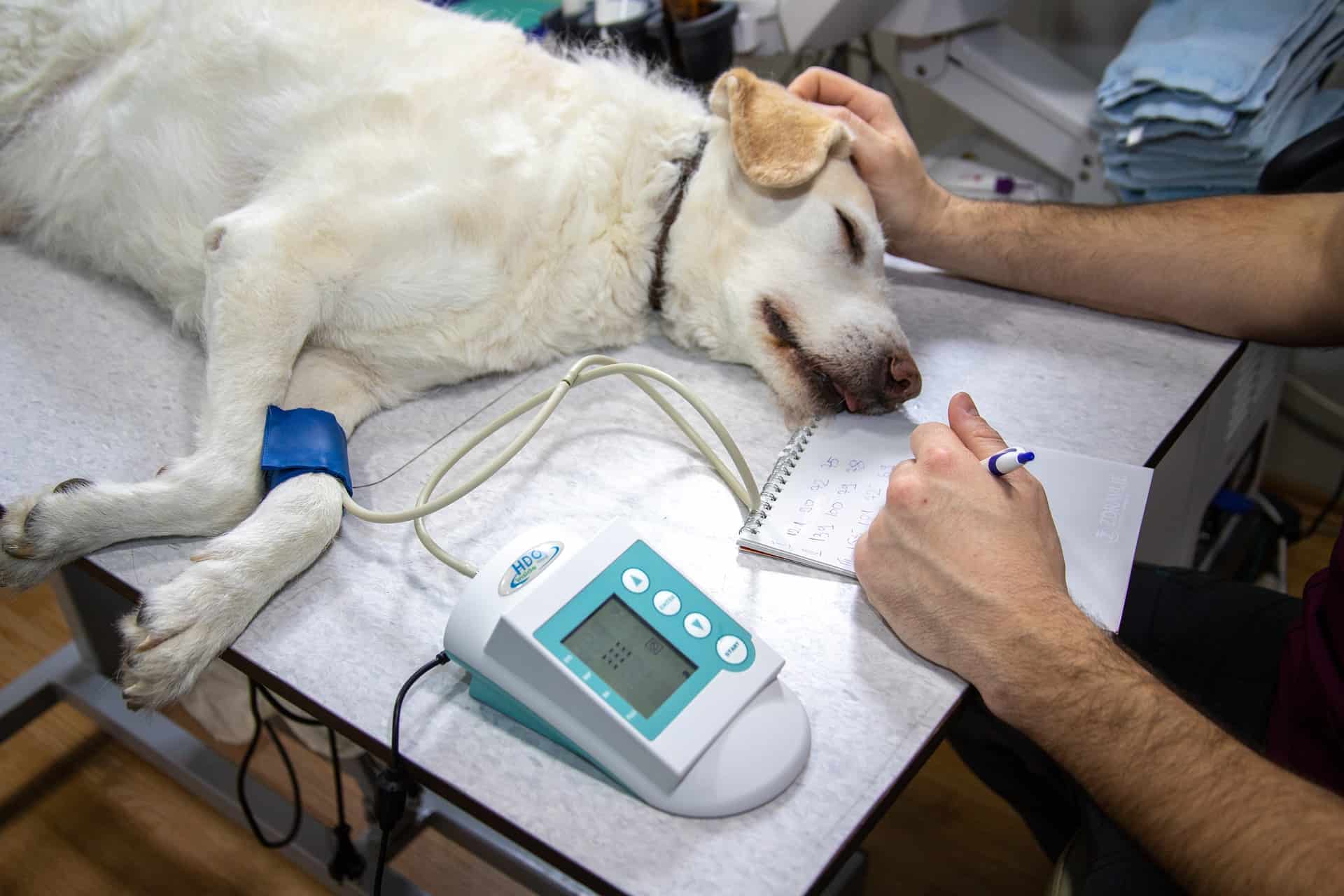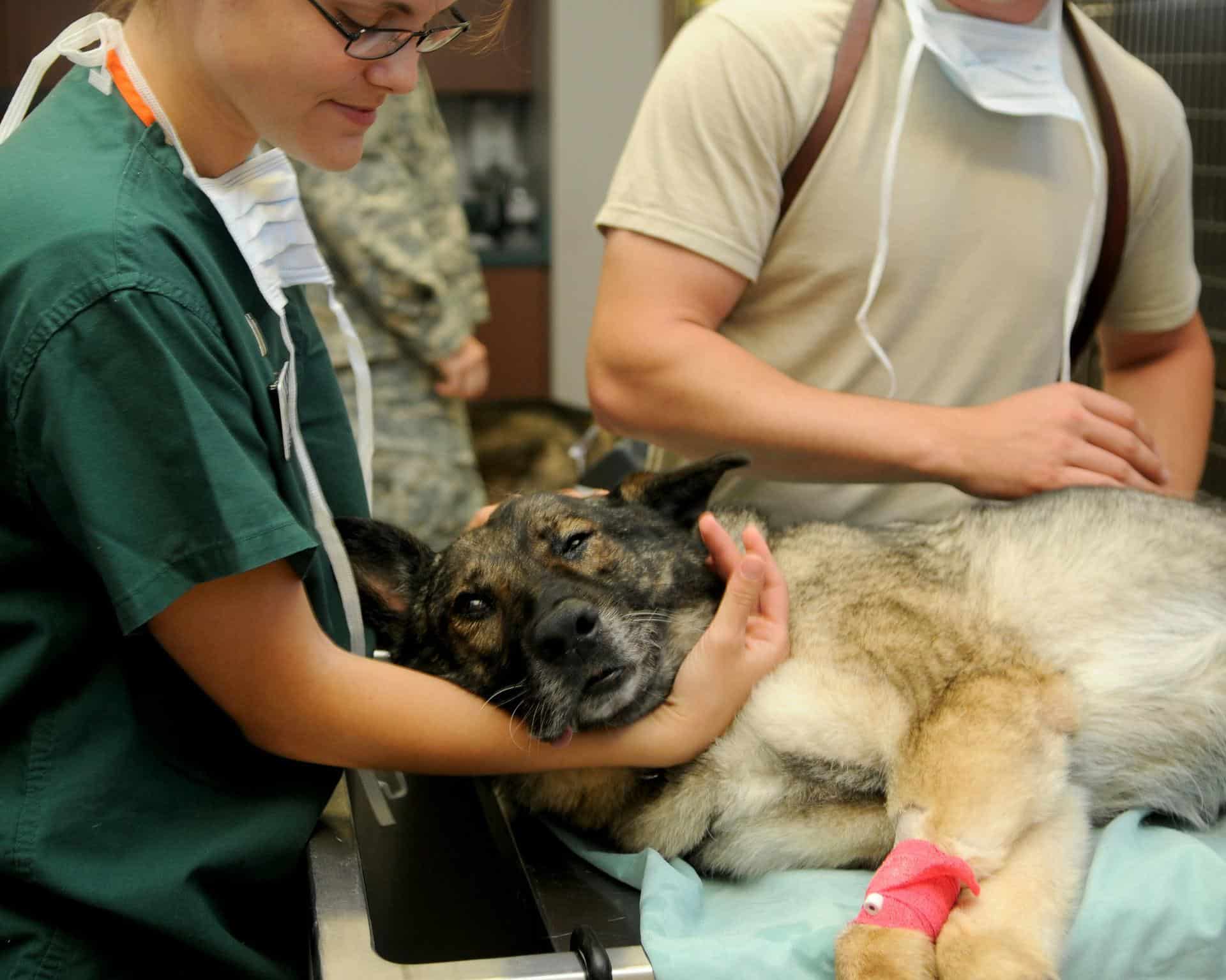A Complete Care Guide On How To Treat A Sprain On A Dog

Dogs love to play and run around. They get exercises in many forms like running and jumping etc. All of this does add some strain to their legs. At times, dogs overdo it and can injure themselves.
Specific injuries could be severe and need treatment, while others are minor, where the dogs need to be cared for at home. Sprains are a common form of injury that could occur in dogs.
Adequate treatment is necessary if your dog has sprained its legs. Sprains could lead to excessive pain that restricts your dog’s movements.
Let’s look at how to treat a sprain on a dog to help speed up recovery.
What Is A Sprain On A Dog?
Sprains are soft tissue injuries that can impact the ligament and cause damage to it. Sprains usually occur due to physical trauma to the ligament. Sprains cause joint damage and mainly affect the knees, ankles, and elbows in animals like dogs.
Sprains occur in dogs for various reasons, including physical activity, significant accidents, and joint degeneration. In terms of physical activity, dogs may sprain themselves by jumping hurdles and stepping in a hole.
The knees and the wrists are joints more prone to sprains in dogs. A severe injury in dogs is a torn cranial cruciate ligament (CCL) that connects the knee bones.
Treatment For A Dog’s Sprained Leg
A sprained leg can be excruciating, and not treating it on time could cause a lot of distress to your dog. You must identify if your dog is in severe pain and direct it for treatment accordingly.
Serious injuries need veterinary care, while minor injuries can be treated and cared for at home.
Veterinary Treatment On A Sprained Leg
If you think the sprain is severe and your dog is in a lot of pain, you need to visit your vet. Inform the vet of the symptoms you identify in your dog, such as limping. If you have any previous medical records of your dogs, you need to take them.
The vet might ask you a few questions that help him identify the injury. He will conduct various tests and examinations on your dog to clarify any possible injury further.
These examinations help the vert identify where exactly the injury is and give the best treatment plan. These tests and examinations include:
- Pressing certain areas to check if they’re sore, swollen, or out of place.
- Take an x-ray.
- Do an MRI or CT scan.
Based on these tests, your vet may recommend the following types of treatment.
- Prescribing an NSAID (non-steroidal anti-inflammatory drug) for pain.
- Keeping heat or ice packs on the injured area.
- Massaging the injured area.
- Physical therapy includes walking and rocking forwards on an exercise ball.

Caring For An Injured Dog
Apart from taking your dog to the vet, you also need to take good care of it at home. Here’s how you can help your dog recover at home.
Give adequate rest to your dog.
Based on the doctor’s recommendations, you can walk her on a leash about four weeks after the injury. Keep an eye out for any signs of tiredness in your dog while walking. If your dog seems tired, walk back home slowly or carry it.
Apply ice to the injured area.
It helps reduce inflammation and speeds up the healing process. Wrap the ice pack in a towel and keep it on the injured area for about 15 to 20 minutes a few times a day.
Give the prescribed medicine.
Ensure that you give the doctor’s prescribed medicine with the correct dosage. If you think your dog is in too much pain, you can speak to the doctor about increasing the dosage or changing the medication.
Take your dog for walks.
Once you get the green light from your vet, you can take your dog for walks, starting slowly over short distances. You can try making your dog swim or walk on an underwater treadmill to promote healing.
Don’t give it any challenging activities like hiking. Also, avoid taking your dog to the local park until it is completely healed.
Difference Between Strains And Sprains On A Dog
People often confuse strains with sprains. A strain is a minor injury that causes your dog to limp. It can occur when your dog pulls a muscle or tendon.
On the other hand, sprains are injuries that can cause damage to the ligament that connects two bones. Animals like dogs are more prone to this type of injury due to their levels of activeness. Sprains occur mainly in the limbs but can even affect other body parts.
What Causes Sprains On Dogs
Dogs can get sprains because of overworking or overextending their leg muscles and tendons. It could occur due to dogs’ strenuous activities, like jumping, running, and hiking.
However, accidents like falling, slipping, tripping, stepping awkwardly, or knocking on a vehicle can cause sprains to occur in dogs.
It is vital to identify the cause of the sprain and inform your vet about it so that he can treat the injury accordingly.
Symptoms Of Sprains On Dogs
Here are signs that indicate your dog has a sprain.
- Limping or sudden lameness
- Swollen paw
- Redness in joints
- Reluctant to play or even walk
- Crying in pain when walking
- Sensitive when touched in the injured area
- Irritability towards everything
Once you identify the above symptoms, you need to take your dog to a vet to examine the cause further.
Types Of Sprains On Dogs
Three types of sprains could occur in dogs.
- Grade I: It is a minor sprain where a small part of the ligament is torn. However, the joint remains functional. There is some swelling, and your dog could be in pain, but it can still walk.
- Grade II: A much larger part of the ligament is torn or stretched, and the joint is partially functional. Your dog may be able to walk, but it will show some lameness. Severe swelling will also occur in this type of sprain.
- Grade III: It is the most severe form of sprain where the ligament is seriously damaged or completely torn. The dog will most likely be unable to walk as the bones may not remain intact.

How To Prevent Sprains On Dogs
Overweight dogs are more prone to ligament injuries like sprains. Therefore, you need to keep your dog at a healthy weight to avoid these types of damage.
If your dog is overweight, your vet will be able to recommend a therapeutic diet to help maintain a healthy weight.
Dogs are active and tend to sprain often from activities like jumping. Therefore, try to keep them away from furniture like beds and couches. Instead, provide them with other methods to get down, like stairs and ramps.
Dog Care Guide
Caring for your dog is vital whether it’s in pain or not. Taking good care of your dog helps prevent accidents that could lead to various injuries.
If you want to know more about how to take care of your dog, IPetGuides provides a comprehensive guide on this subject.
Conclusion
Realizing that your dog is in pain is the first step toward identifying it has a sprain. Once you determine this, you need to take your dog to a vet for adequate treatment.
You should also take proper care of your dog while it recovers from home. Finally, your dog will be back to normal and will be able to enjoy its activities as it did before the injury.
FAQs
How Long Will It Take For My Dog’s Sprain To Heal?
The time it takes for a dog’s sprained leg to heal could vary depending on the severity of the injury. The time varies between two to six weeks.
Will My Dog’s Sprain Heal On Its Own?
Minor sprains will heal independently, while more severe injuries need veterinary treatment to assist in recovery.
Should I Wrap My Dog’s Sprain?
You should wrap the sprain with an ice pack in a towel and keep it on the injured area for 15 to 20 minutes.
What Are The Natural Remedies I Can Give My Dog For Pain?
Physical therapy, including walking on an underwater treadmill and rocking forwards on an exercise ball, are ways to speed up a dog’s sprain recovery.
How Can I Console My Dog When It’s In Pain?
Give your dog a soft couch to sit on and some of his favorite toys and food to console when it’s in pain. You can also give a luxurious massage to comfort your dog.
How Do I Know If My Dog Has A Serious Leg Injury?
Signs that indicate your dog has a severe leg injury are swelling, a hot limb, a dangling limb, or an obvious and unnatural angle of limbs.
Odie pet health insurance can provide peace of mind and coverage for serious leg injuries, but signing up before your dog gets injured is important. Explore our plans.
Know more about the limits and benefits of pet insurance by reading this article.
